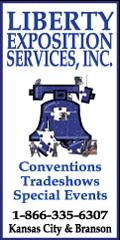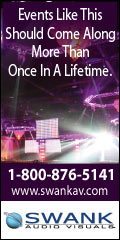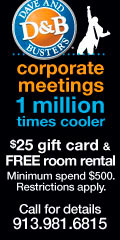| Past Issues/Subscribe | Advertise | KCMPI.ORG |

Did You Miss the Educational Etiquette luncheon on April 14 at 801 Chophouse?
Did you miss the informative etiquette luncheon on April 14 at the 801 Chophouse? Guest speaker Colleen Richenbacher Meeting News magazine’s Top 25 Most Influential Person in the Meetings Industry, spoke on dining etiquette, international etiquette, electronic etiquette, business networking and toasting. All attendees enjoyed the education, the food, and the networking time. KCMPI members are equipped for success with their new dining and networking knowledge! Whether you missed the event or truly enjoyed Colleen’s education and want to learn more, click here to link to a few videos featuring Colleen, or read the "Tips on Dining" below. The lunch and private dining experience, provided by 801 Chophouse, was truly spectacular! Thanks to our sponsors for allowing this luncheon to be possible: Etiquette and Why It Is Important: Tips on Dining It's hard to imagine, but etiquette started back in the 1600s, by the gardener in France. During the reign of King Louis XIV and the creation of the Gardens of Versailles, the gardener was so particular and angry that people kept stepping on his gorgeous flowers. So, he placed a sign or "etiquette" to keep off the flowers. Even though hundreds of years have passed, etiquette is still important. Yes, you should keep off the grass, but you should also know some basics, including a good handshake, which bread and butter plate is yours, and proper business etiquette. Eating is important, and most of us do it several times a day. Our society has changed in regard to eating habits since the 1600s to a fast-paced, very diverse, multitasking society. Because of this lifestyle, our eating habits have suffered. The good news is that the family standards are making a nice swing back to trying to have three to four meals each week together. It has been proven that children of families that eat meals together on a regular basis are better students, healthier, and less likely to smoke, drink or use drugs. Students of these families have better scholastic scores and fewer behavioral problems. Amazing what time together can do. Remember Julia Roberts in the famed scene from Pretty Woman of the food flying across the room. Well, that was cute for that scene, but you can't go to all those special social or business events with food orbiting around the room, or no idea if that is your fork or your neighbors that you just picked up. After a while, the "cuteness" wears off. With all that, many people never received or chose to remember the basics on Dining Etiquette 101. So here are my top-ten tips: Think of a "b" and a "d." Make a "b" with your left hand. Go on; put your index finger and thumb together, and your other three fingers straight up. Now do the same with your right hand and from a "d." This is actually the "d" for sign language. Never again will you forget that the bread and butter plate is on your left side of the place setting, and the drinks will be on the right. If you are left-handed, don't move your glasses to the left side, and if you are right handed, don't touch that bread and butter plate. A simple and fun version of this helpful tip is the "BMW" rule. Same set-up from left to right, "B" is for the bread and butter, "M" is for the meal, and "W" is for water. Once you pick up any piece of silverware, it never touches the table again. Resting it partially on the table is touching. If eating American style and taking a break in the meal, place your knife across the top of your plate with the blade facing you. If eating European or Continental style, place the knife and fork in an inverted V on your plate (tines of the fork facing down on the left side of the V and the knife blade facing the center to form the right side of the V). When you are finished with your meal, you can place the fork and knife together, angled across the plate. Picture a clock with the handle of the knife and fork on the four and the tips on the ten. The blade will face in, and the tines of the fork can be either up or turned down. Or you can place the fork and knife to the right side of the plate. Both signal the wait staff that you are finished. Don't turn over that coffee cup. If you don't want coffee or wine, don't turn your cup or glasses upside down. Let the wait staff do that. The same would apply when you are done with your meal, and you don't want anymore. Would you turn your plate upside down? The napkin is to blot your mouth during or after your meal. It is not used as a tissue, or wrapped around your neck to catch that possible spill. When you leave the table during the meal, place the napkin on the chair, and push in your chair. Never, ever, ever take your roll and cut it in half, and then butter the entire roll. One piece at a time will do. Break the roll in half with your hands. Set it down, and then break off only the piece that will go in your mouth. Butter each piece, one at a time. Same goes for crackers. Those wonderful little pink, blue, and yellow substitute sugar packets can do without you shaking, tapping or clicking 20 to 30 times. They are not that large, just use two of them if necessary. One little shake or none is plenty. Then make those colorful little packets go away. Place them under your coffee saucer or the bread and butter plate, or your entrée dish. Don't let your area at the table look like you are ready for a baby shower. Remember that salt and pepper are married. They don't travel alone. If someone asks only for the salt or only for the pepper, still pass both to him or to her. Do not hand them the salt and pepper, but place both beside their plate. It is much easier for them to pick them up and use what they need instead of trying to fumble from your hands to theirs. A buffet is not your last meal. I promise you will eat again. Each time you go to the buffet line to replenish your food, always, always get a clean plate. There are many scary experiences at the buffet line, but that would take a whole article on its own. Lipstick, makeup and toothpicks are a big no-no at the table. If you must put on lipstick, then remove yourself from the table and apply it in a restroom. Toothpicks apply to my one and a half rule. That means you had better be one and a half miles away from any people before a toothpick ever enters your mouth. This is a very private matter. The toast. Toasts can be given to start a meal, an obvious break in the meal or at the end between entrée and dessert. Keep it short. A toast should be 30 to 60 seconds long. Yes, I said seconds. It's a toast, not a roast. Say it from your heart, and not from a little index card. Do not clang that glass with your knife or fork to get everyone's attention. How embarrassing to have that glass shatter in your hands. But, you would get their attention. Etiquette and proper dining skills can be fun once you get the hang of it. You are never too old or too young to learn new tricks. Make eating an enjoyable experience whether with your friends, family or your next potential boss or client. Colleen A. Rickenbacher is author of Be On Your Best Business Behavior: How to Avoid Social and Professional Faux Pas When Dining, Traveling, Conversing and Entertaining; Be On Your Best Cultural Behavior; and her latest publication with McGraw-Hill, The Big Book of People Skills. You can contact Colleen for any speaking engagements for your upcoming office training, conferences, meetings or conventions at (214) 341-1677 or colleen@crspeaks.com, or visit her website at www.colleenrickenbacher.com.
|
| KCMPI Headquarters P.O. Box 11876 Kansas City, MO 64138 T: 816-668-9424 / F: 816-356-4095 info@KCMPI.ORG / www.KCMPI.ORG |
 |



